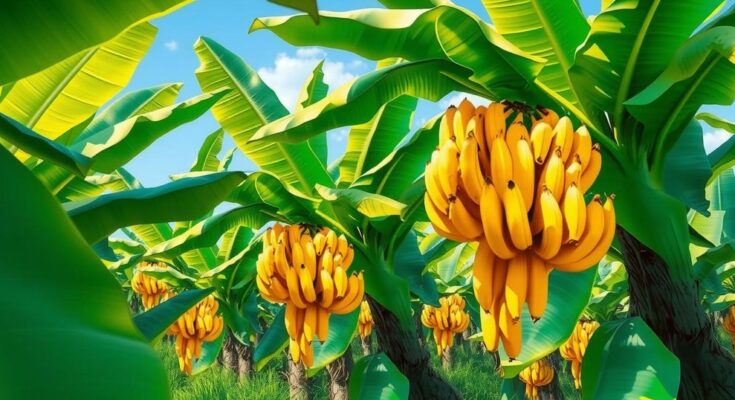Banana production in Piura, accounting for 80-85% of Peru’s total output, remains unaffected by recent heavy rains. Although higher rainfall has impacted highland crops and infrastructure, coastal banana production is stable. The agro-export sector is monitoring weather conditions for future implications on agriculture.
Recent heavy rains in northern Peru, particularly impacting Tumbes and the highlands of Piura, raised alarm in the agricultural sector. Nevertheless, banana production in Piura, which contributes 80 to 85% of the country’s total output, has remained unaffected thus far.
Reports indicate that rainfall has primarily occurred in highland areas of Piura, resulting in some crop losses due to the intensity of the rainfall. Conversely, coastal regions where the majority of bananas and export-oriented mangoes are cultivated have experienced sporadic and minimal rainfall.
Climatic forecasts suggest a potential increase in rainfall for March, creating uncertainty regarding its agricultural impact. Tumbes has experienced more severe rainfall, causing significant crop losses and damage to infrastructure.
The Piura region previously encountered a prolonged drought from October to December last year, leading to hydric stress in plantations due to diminished water reserves. The recent rainfall has alleviated some concerns, but the situation remains stable for coastal agriculture at present.
The agro-export sector is closely monitoring evolving weather conditions, recognizing that any significant changes in rainfall patterns could impact the production and logistics of key crops in the region.
In summary, banana production in Piura has remained stable despite heavy rains affecting other areas. The predominantly coastal cultivation of bananas and mangoes has experienced minimal rainfall, alleviating immediate concerns for producers. Future rainfall patterns will require vigilance from the agro-export sector to mitigate potential impacts on crop production and logistics.
Original Source: www.freshplaza.com




